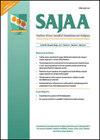T. Lombard, S. Spijkerman, C. van Rooyen
{"title":"南非第二波COVID-19疫情期间麻醉师创伤后应激症状的患病率及易感因素","authors":"T. Lombard, S. Spijkerman, C. van Rooyen","doi":"10.36303/sajaa.2022.28.2.2764","DOIUrl":null,"url":null,"abstract":"Background: Post-traumatic stress symptoms (PTSS) have been described in healthcare workers after disease outbreaks. Anaesthetists are at high risk of exposure to COVID-19 due to the nature of the airway procedures they perform. Anaesthetists are also at increased risk of mental health disorders, substance abuse and suicide. When the occurrence of PTSS is great in both number and severity, these become the key elements of the diagnostic criteria for post-traumatic stress disorder (PTSD). This study explores the prevalence and predisposing factors of PTSS in anaesthetists during the second wave of COVID-19 in South Africa. Methods: Members of the South African Society of Anaesthesiologists (SASA) completed an electronic questionnaire regarding their sociodemographic information as well as COVID-19 exposure. The PTSD checklist for DSM-5 (PCL-5) was used to measure PTSS. The resulting score gave an indication of symptom severity, with a score of 33 or higher indicating a provisional diagnosis of PTSD. Results: A total of 483 participants completed the questionnaire (23.8% response rate). Of these, 391 participants were included in the study and 69 participants (17.6%) received a provisional PTSD diagnosis. Participants who are younger and have less experience, who are female, who are single or who do not have children exhibited a greater prevalence of PTSD. Also, those participants who had pre-existing mental health conditions (p = 0.009), and those who reported loneliness (p < 0.001) and poor social support (p = 0.018) were more likely to receive a provisional PTSD diagnosis. Personal protective equipment (PPE) shortages were also associated with the development of PTSD (p = 0.009). Conclusion: The prevalence of PTSS is unacceptably high among South African anaesthetists, especially those with pre-existing mental health conditions and poor social support. This calls for support of vulnerable healthcare workers during disease pandemics. © 2022 The Author(s).","PeriodicalId":21769,"journal":{"name":"Southern African Journal of Anaesthesia and Analgesia","volume":" ","pages":""},"PeriodicalIF":0.3000,"publicationDate":"2022-03-01","publicationTypes":"Journal Article","fieldsOfStudy":null,"isOpenAccess":false,"openAccessPdf":"","citationCount":"2","resultStr":"{\"title\":\"Prevalence and predisposing factors of post-traumatic stress symptoms in anaesthetists during the second wave of COVID-19 in South Africa\",\"authors\":\"T. Lombard, S. Spijkerman, C. van Rooyen\",\"doi\":\"10.36303/sajaa.2022.28.2.2764\",\"DOIUrl\":null,\"url\":null,\"abstract\":\"Background: Post-traumatic stress symptoms (PTSS) have been described in healthcare workers after disease outbreaks. Anaesthetists are at high risk of exposure to COVID-19 due to the nature of the airway procedures they perform. Anaesthetists are also at increased risk of mental health disorders, substance abuse and suicide. When the occurrence of PTSS is great in both number and severity, these become the key elements of the diagnostic criteria for post-traumatic stress disorder (PTSD). This study explores the prevalence and predisposing factors of PTSS in anaesthetists during the second wave of COVID-19 in South Africa. Methods: Members of the South African Society of Anaesthesiologists (SASA) completed an electronic questionnaire regarding their sociodemographic information as well as COVID-19 exposure. The PTSD checklist for DSM-5 (PCL-5) was used to measure PTSS. The resulting score gave an indication of symptom severity, with a score of 33 or higher indicating a provisional diagnosis of PTSD. Results: A total of 483 participants completed the questionnaire (23.8% response rate). Of these, 391 participants were included in the study and 69 participants (17.6%) received a provisional PTSD diagnosis. Participants who are younger and have less experience, who are female, who are single or who do not have children exhibited a greater prevalence of PTSD. Also, those participants who had pre-existing mental health conditions (p = 0.009), and those who reported loneliness (p < 0.001) and poor social support (p = 0.018) were more likely to receive a provisional PTSD diagnosis. Personal protective equipment (PPE) shortages were also associated with the development of PTSD (p = 0.009). Conclusion: The prevalence of PTSS is unacceptably high among South African anaesthetists, especially those with pre-existing mental health conditions and poor social support. This calls for support of vulnerable healthcare workers during disease pandemics. © 2022 The Author(s).\",\"PeriodicalId\":21769,\"journal\":{\"name\":\"Southern African Journal of Anaesthesia and Analgesia\",\"volume\":\" \",\"pages\":\"\"},\"PeriodicalIF\":0.3000,\"publicationDate\":\"2022-03-01\",\"publicationTypes\":\"Journal Article\",\"fieldsOfStudy\":null,\"isOpenAccess\":false,\"openAccessPdf\":\"\",\"citationCount\":\"2\",\"resultStr\":null,\"platform\":\"Semanticscholar\",\"paperid\":null,\"PeriodicalName\":\"Southern African Journal of Anaesthesia and Analgesia\",\"FirstCategoryId\":\"1085\",\"ListUrlMain\":\"https://doi.org/10.36303/sajaa.2022.28.2.2764\",\"RegionNum\":0,\"RegionCategory\":null,\"ArticlePicture\":[],\"TitleCN\":null,\"AbstractTextCN\":null,\"PMCID\":null,\"EPubDate\":\"\",\"PubModel\":\"\",\"JCR\":\"Q4\",\"JCRName\":\"ANESTHESIOLOGY\",\"Score\":null,\"Total\":0}","platform":"Semanticscholar","paperid":null,"PeriodicalName":"Southern African Journal of Anaesthesia and Analgesia","FirstCategoryId":"1085","ListUrlMain":"https://doi.org/10.36303/sajaa.2022.28.2.2764","RegionNum":0,"RegionCategory":null,"ArticlePicture":[],"TitleCN":null,"AbstractTextCN":null,"PMCID":null,"EPubDate":"","PubModel":"","JCR":"Q4","JCRName":"ANESTHESIOLOGY","Score":null,"Total":0}
引用次数: 2
Prevalence and predisposing factors of post-traumatic stress symptoms in anaesthetists during the second wave of COVID-19 in South Africa
Background: Post-traumatic stress symptoms (PTSS) have been described in healthcare workers after disease outbreaks. Anaesthetists are at high risk of exposure to COVID-19 due to the nature of the airway procedures they perform. Anaesthetists are also at increased risk of mental health disorders, substance abuse and suicide. When the occurrence of PTSS is great in both number and severity, these become the key elements of the diagnostic criteria for post-traumatic stress disorder (PTSD). This study explores the prevalence and predisposing factors of PTSS in anaesthetists during the second wave of COVID-19 in South Africa. Methods: Members of the South African Society of Anaesthesiologists (SASA) completed an electronic questionnaire regarding their sociodemographic information as well as COVID-19 exposure. The PTSD checklist for DSM-5 (PCL-5) was used to measure PTSS. The resulting score gave an indication of symptom severity, with a score of 33 or higher indicating a provisional diagnosis of PTSD. Results: A total of 483 participants completed the questionnaire (23.8% response rate). Of these, 391 participants were included in the study and 69 participants (17.6%) received a provisional PTSD diagnosis. Participants who are younger and have less experience, who are female, who are single or who do not have children exhibited a greater prevalence of PTSD. Also, those participants who had pre-existing mental health conditions (p = 0.009), and those who reported loneliness (p < 0.001) and poor social support (p = 0.018) were more likely to receive a provisional PTSD diagnosis. Personal protective equipment (PPE) shortages were also associated with the development of PTSD (p = 0.009). Conclusion: The prevalence of PTSS is unacceptably high among South African anaesthetists, especially those with pre-existing mental health conditions and poor social support. This calls for support of vulnerable healthcare workers during disease pandemics. © 2022 The Author(s).

 求助内容:
求助内容: 应助结果提醒方式:
应助结果提醒方式:


